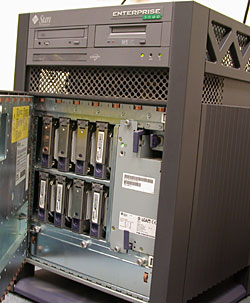![[Sea ice (DynaLiFe cruise/NBP0901)]](/images/random/thumb_DSCN6172.jpg)
![[Ice concentration in the Arctic]](/images/random/thumb_arctic.jpg)
![[Clear water with no ice algae near the ice edge (DynaLiFe cruise/NBP0901)]](/images/random/thumb_DSCN6271.jpg)
![[Deep-See Research II Special Issue: The Phytoplankton Megabloom beneath Arctic Sea Ice: Results from the ICESCAPE Program]](/images/random/thumb_dsr2_underice_zoom.jpg)
![[DNA material of P.antarctica to be sequenced]](/images/random/thumb_dna_pa_gel.jpg)
![[Sea ice (DynaLiFe cruise/NBP0901)]](/images/random/thumb_DSCN6172.jpg) ![[Ice concentration in the Arctic]](/images/random/thumb_arctic.jpg) ![[Clear water with no ice algae near the ice edge (DynaLiFe cruise/NBP0901)]](/images/random/thumb_DSCN6271.jpg) ![[Deep-See Research II Special Issue: The Phytoplankton Megabloom beneath Arctic Sea Ice: Results from the ICESCAPE Program]](/images/random/thumb_dsr2_underice_zoom.jpg) ![[DNA material of P.antarctica to be sequenced]](/images/random/thumb_dna_pa_gel.jpg)
| |
Ocean Biogeochemistry Lab |
|
 "Ocean" is an 8 CPU server with 4 Gigs of memory running Solaris 5.7. It has eight hot-swappable FC-AL (Fibre Channel Arbitrated Loop) SCSI hard disks. Connected to the server is an external storage RAID system with a capacity of 1.6 TB.
"Ocean" is an 8 CPU server with 4 Gigs of memory running Solaris 5.7. It has eight hot-swappable FC-AL (Fibre Channel Arbitrated Loop) SCSI hard disks. Connected to the server is an external storage RAID system with a capacity of 1.6 TB.
The server was retired after 13 years of dedicated service. It has been replaced by a new self-built server, 'icy.stanford.edu'. This self-built server contains two Intel Xeon E5520 Nehalem 2.26Ghz Quad-core processors, along with plenty of memory and disk space. Icy's operating system is CentOS 5 (64-bit, linux). Icy is now hosting the ocean.stanford.edu website as well.
Helpful information for ocean-users:
Disk Space: Disk space is divided over several partitions of various sizes. The command 'df' will tell you how much space is available on each. Here is a (condensed) snapshot of disk usage taken April 29, 2005:
Filesystem kbytes used avail capacity Mounted on
/dev/dsk/c0t0d0s4 5308142 4767353 487708 91% /export/home
/dev/dsk/c0t2d0s3 8750565 7985380 677680 93% /data2
/dev/dsk/c0t2d0s4 8750565 7735646 927414 90% /data3
/dev/dsk/c0t3d0s0 8706617 7179324 1266095 86% /data4
/dev/dsk/c0t3d0s1 8706617 6947745 1497674 83% /data5
/dev/dsk/c2t4d0s6 70588665 65350788 4531991 94% /data6
/dev/dsk/c2t5d0s6 70588665 68646875 1235904 99% /data7
/dev/dsk/c2t6d0s6 70588665 57699848 12182931 83% /data8
/dev/dsk/c0t2d0s5 17512054 14974237 2362697 87% /data9
/dev/dsk/c3t2d0s6 576571101 338186347 232619043 60% /raida
/dev/dsk/c3t2d1s6 288285170 217542816 67859503 77% /raidb
/dev/dsk/c3t2d1s7 288285170 257967184 27435135 91% /backup
As is indicated above disk space in the home directories (/export/home or /home) is very limited. The size of the partition is about 5Gb but it is 91% filled. Therefore this is not the place for storing large files. However, since the home directory is backed up daily it is the ideal place to put your scripts which are normally small text files.
The best place to store your large files, like model output, processed satellite images, etc., is on one of the /data disks or the RAID (/raida, /raidb). The disk sizes are as follows:
/home 5Gb (but normally only <0.5Gb availabe)
/data2-5 9Gb
/data6-8 72Gb
/data9 18Gb
/raida ~600Gb
/raidb ~300Gb
The /backup partition (which is also on the RAID) is for backup only. You cannot write to it, but you can easily retrieve files from there if you accidentilly have deleted something (see below). /data0 and /data1 have been 'retired', but the original contents is still available on /raida.
Since the RAID is not backed up this is the ideal place for putting the raw satellite scenes and other data which can easily be reordered or otherwise regenerated. Also, feel free to backup documents from your desk computer to the RAID.
Jobs
The server has 8 CPUs, so 8 jobs can be run at the same time without sacrificing speed. You can check the load with the command top. A load of 8 means that the CPUs are busy 100% of the time. Since this is a shared system do not start too many model runs at the same time (or ask other users if it is ok if you plan to run more then 4).
Personal Website
The files for your personal webpages should go in the ~/public_html directory. If you name your homepage 'index.html' it will then be available to the world as ocean.stanford.edu/yourusername
Backups
(1) RAID (/backup) - The home directories and /data2-9 are backed up to the RAID (/backup). These are not incremental backups, so everytime a partition is backed up, the previous backup is overwritten. For the /home directories a weekly backup which is generated on Sunday is retained. The RAID itself (/raida and /raidb) is not backed up. The backup schedule is as follows:
Monday /home /data6
Tuesday /home /data7
Wednesday /home /data8 /data9
Thursday /home /data6
Friday /home /data7
Saturday /home /data2-5 /data8
Sunday /home (weekly) /data9
(2) Off-site backup - A semi-automated off-site backup of all of ocean (except the RAID) and some of the PC/Macs has also been implemented. The backup center is located in Sunnyvale, CA.
(3) Tape - The system and home directories and /data2-data5 are also backed up to tape. These are incremental ufsdumps spread over 2 sets of 10 tapes, each covering a 2 week schedule. The schedule below shows the dump level for each backup. All files changed since a backup was done at a lower dump level are backed up. Dump level 0 is the full backup. Since this is a semi-manual process days can be skipped. It is also harder to retrieve files from tape then from the /backup partition of the RAID. However, files can be retrieved changed further back in time. Older sets of these are stored off-site.
Mounted | wk1 wk1 wk1 wk1 wk1 wk2 wk2 wk2 wk2 wk2
filesystem | mon tue wed thu fri mon tue wed thu fri
-------------------------------------------------------------------------------
/ | 2 3 4 0 1 2 3 4 0 1
/var | 1 2 3 4 0 1 2 3 4 0
/export/home | 1 1 1 1 0 1 1 1 1 0
/data2 | 0 1
/data3 | 1 0
/data4 | 1 0
/data5 | 1 0
(4) DVD - Partial disk backups are burned on DVDs. These can hold ~4Gb each, and serve as permanent backups. DVDs are stored off-site.